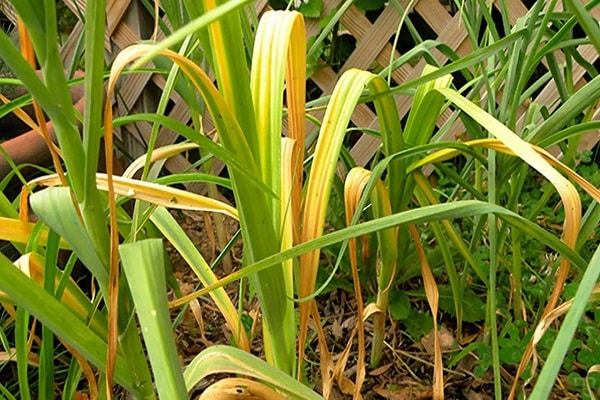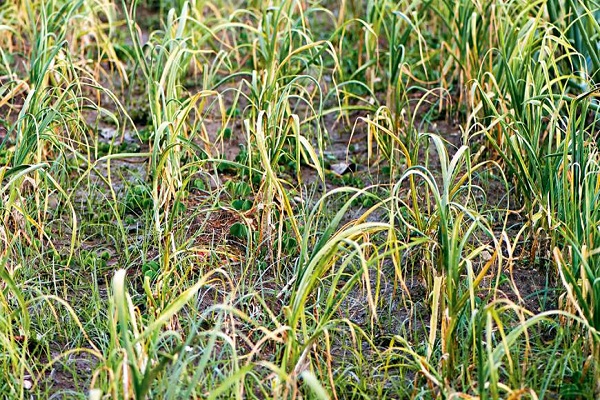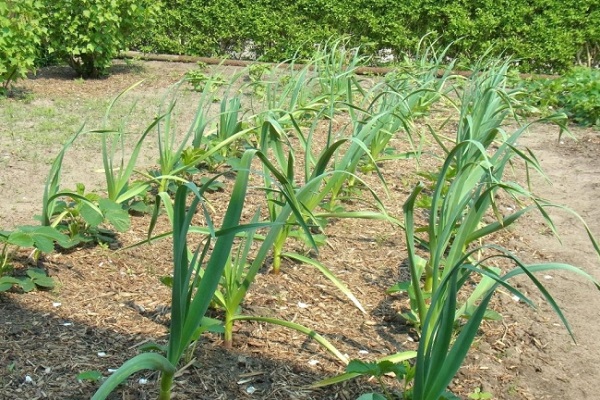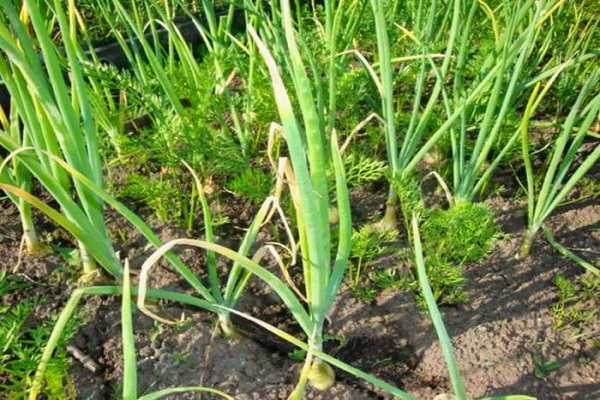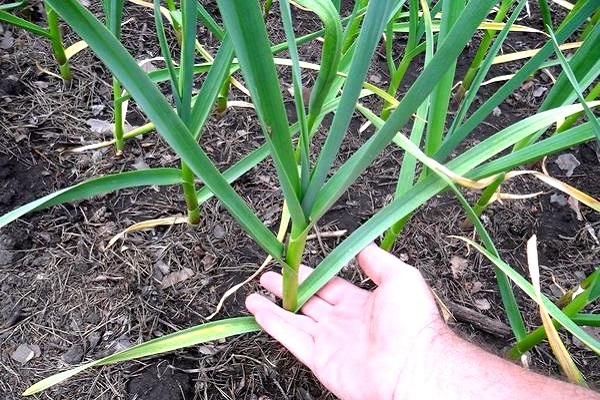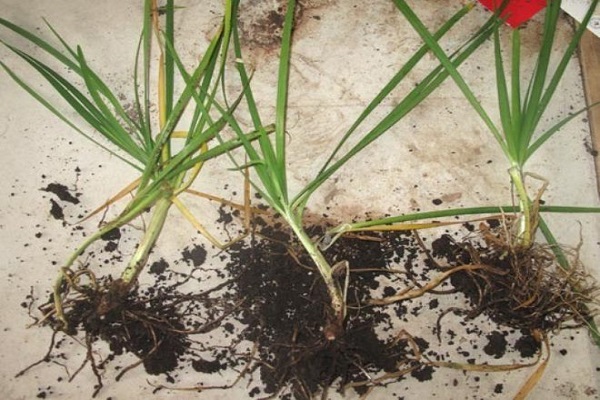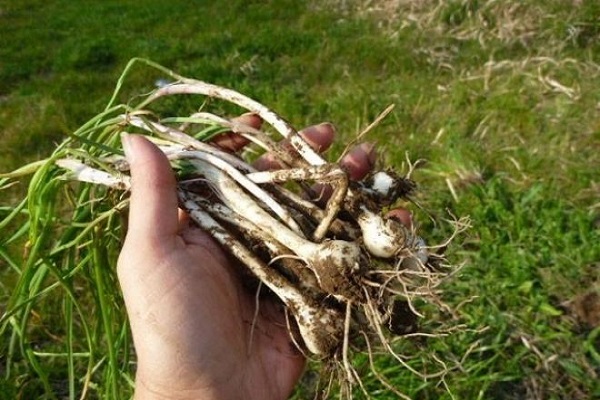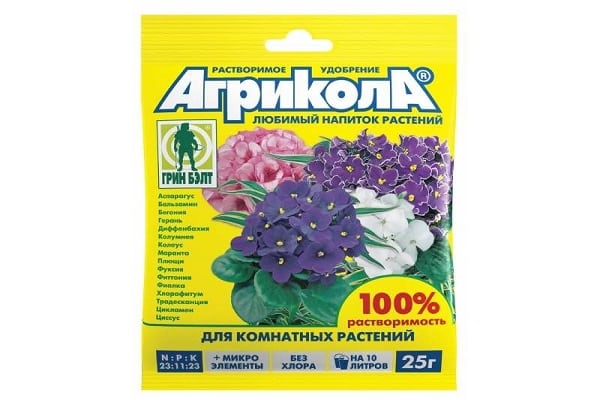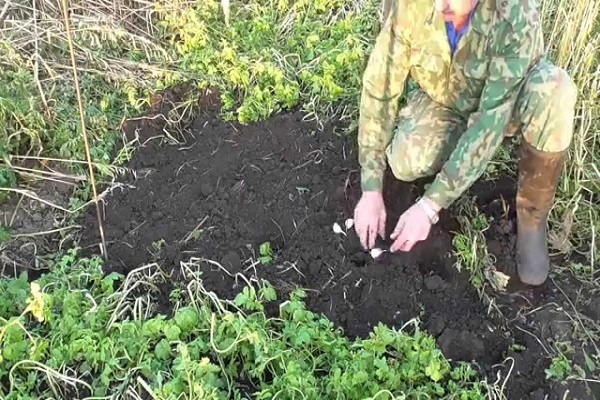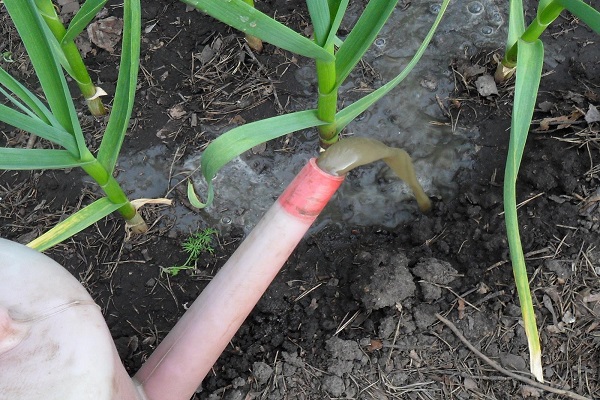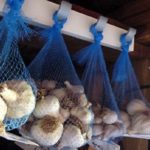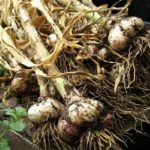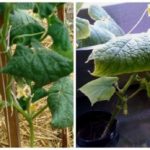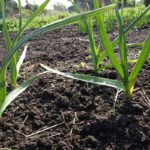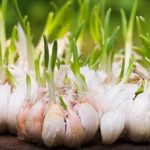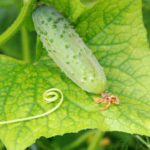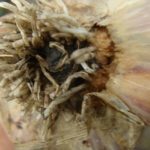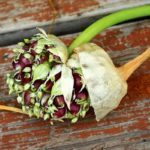Growing vegetables is not easy, so useful advice from experienced gardeners will always come in handy. Among the common problems when growing vegetable crops is the yellowness of garlic. Why does garlic turn yellow? There seems to be no particular reason for the feather to turn yellow, but a bed of vegetables turns from green to yellow in the spring or in mid-summer, in July. Usually the stems are dried before harvesting the garlic heads. It is clear that yellowing ahead of time will stop the growth of the bulbs.
Yellowing of garlic caused by frost
Although garlic is not afraid of frost, withstanding a short-term drop in temperature to minus three degrees, with prolonged cold weather it begins to turn yellow.
Sharp temperature changes between day and night are common in temperate regions, and what to do if the tips of your garlic leaves turn yellow. Given the change in weather, you can cover the bed with the plant with plastic wrap at night.
Winter types of garlic sprout in the spring and immediately the leaves turn yellow and droop. This happens due to incorrect timing of planting crops in winter. Early planting will lead to the emergence of seedlings in the fall and their freezing during frosts. It is important to pay attention to the gardener’s calendar to determine planting dates for a specific year. In the middle zone, the crop is planted in the second or third decade of October, in warm areas - two weeks later.
Garlic is turning yellow, don’t know what to do? Spraying with the growth stimulator Zircon will help speed up the formation of young leaves in the spring.
Excess or lack of moisture
The conditions for growing garlic include the composition of the soil and its moisture level. The vegetable does not like overly moist soils. Therefore, they choose an area with deep groundwater.
If the leaves of garlic turn yellow during a humid summer, this indicates oxygen starvation of the roots of the plant. Oversaturation of soil moisture leads to the appearance of a dense crust on top of the bed. The situation can be corrected by loosening the soil, unhilling the stem and raking the soil away from the bulb. To prevent the stems and roots from getting wet, it is better to grow the crop on high ridges.
During the dry season, the plant may lack moisture. Therefore, water the beds every week. Besides water, when garlic turns yellow, what should you water it with during drought? Choose nutrient solutions with growth stimulants.If there is a threat of frost, then you should water the vegetable more often. This way, the leaves will begin to renew faster, and the vegetable plant will continue its growing season.
Diseases and pests of garlic as the cause of yellowing of the feather
A feature of garden crops is that the smell repels garden pests. But if the soil is contaminated with fungi and larvae, it is difficult to save the plant from disease. And the first symptoms of an unhealthy crop are yellowing of the leaves, stems, and the appearance of brown spots on them. The diseased plant is unable to develop further, begins to dry out and dies.
You can determine the reason why garlic turns yellow in the garden and what to do about it by examining the bulb and the stem of the plant. Even a visual inspection reveals the source of the problem:
- Rot that appears on the head of a vegetable is a symptom of fungal diseases: rot, rust. Fungal infection occurs through soil or seed material. The disease, as it progresses, leads to rotting of the bulb and yellowing of the leaves. When the first signs appear, the vegetable plantings are treated with Quadris. The procedure is carried out three times every two weeks.
- Onion fly mold is also found on the bulbs. The pest larvae penetrate the stem, eating it. And the damaged areas are colonized by pathogenic microorganisms that kill the plants.
- If yellow stripes appear at the tips of the leaves and the stem is covered with brown streaks, then the vegetable is sick with fusarium. You can cope with the first signs of infection by treating with Fitosporin-M.
- During wet summer, the leaves of the plant turn yellow and become covered with a white coating on the underside. Powdery mildew fungi have infected the vegetable. They fight microorganisms by spraying with preparations containing copper.
- Onion stem nematode is dangerous for vegetable crops.By feeding on the sap of the plant, the parasite larvae cause the garlic to turn yellow and stop its development. The leaves of the vegetable dry out, curl, and the head rots. The pest eggs settle in the bottom of the bulb, and the worms migrate, affecting neighboring plants.
- If it starts up in the garden onion fly, then it will be detected visually. Small light gray flies fly around the garlic feathers. The damage is caused by fly larvae that penetrate into the bulb and eat it. Damage to a vegetable can be determined by mold on the roots. Creolin or naphthalene is used to repel flies.
As soon as the leaves begin to yellow for no reason, it is necessary to carefully examine all parts of the plant to identify a disease or pest.
How to prevent the disease?
Experienced gardeners suggest the following measures to prevent vegetable diseases:
- Do not plant garlic in the same place.
- Before planting a vegetable plant, the bed is watered with a solution of potassium permanganate. Planting material is also soaked in it for twelve hours. Then washed and dried.
- The soil in greenhouses requires special attention. It must be replaced and disinfected annually.
- You need to know how to feed the crop. If garlic turns yellow, greenhouse pests can lead to a lag in its growth and vegetation. It is necessary to constantly monitor the condition of the soil in the room, disinfect it, and change it regularly.
Mint and calendula are planted next to garlic, whose roots secrete special substances. They are poisonous to fungi and flying insects. And the onion fly is repelled by planting carrots. They get rid of the parasite by spilling the soil with saline solution.
Lack of nitrogen and other microelements
For a full growing season, garlic needs nitrogen, and to a lesser extent potassium and phosphorus. When there are not enough elements in the soil, the leaves begin to turn yellow.
A single fertilizing with nitrogen will lead to the restoration of the vegetable plant. Repeat the procedure after two weeks.
If the leaves turn yellow, what is the best way to feed the garlic? Among fertilizers containing nitrogen, urea is chosen. The emerging seedlings are watered with it at a rate of three liters per square meter. One tablespoon of urea per bucket of water is enough.
For dry fertilizing during wet weather, urea is placed in the grooves along the vegetable rows. Two grams of the substance are enough per square meter.
By applying fertilizer in a timely manner, yellowing of the feathers can be avoided.
The lack of microelements will also affect other crops growing next to garlic. Phosphorus reserves in the soil are replenished with wood ash in July. Garlic is enriched with other microelements using complex substrates Agricola and Kemiru. Fertilizers are applied either in dry form before digging the area, or with a solution when watering the seedlings.
Green manure - green manure is sown on the plot four months in advance. These include oats and white mustard. Then the greens are cut and the stems are buried in the ground. Having rotted, they will fill the soil with useful elements.
Recipe for spring feeding of garlic
If garlic leaves turn yellow, the beds are treated in the spring with nutrient solutions. Here is the recipe for one of them:
- Twenty liters of water, preferably rainwater, are poured into a barrel.
- Twelve grams of ammonium nitrate and potassium are diluted in liquid, and twenty grams of superphosphate.
- The seedlings are watered with liquid fertilizer. The amount of fertilizer is enough for two square meters.
- This procedure is repeated a month later, in June.
Applying fertilizer on time will allow the vegetable not only to take root, but also to fully develop.

